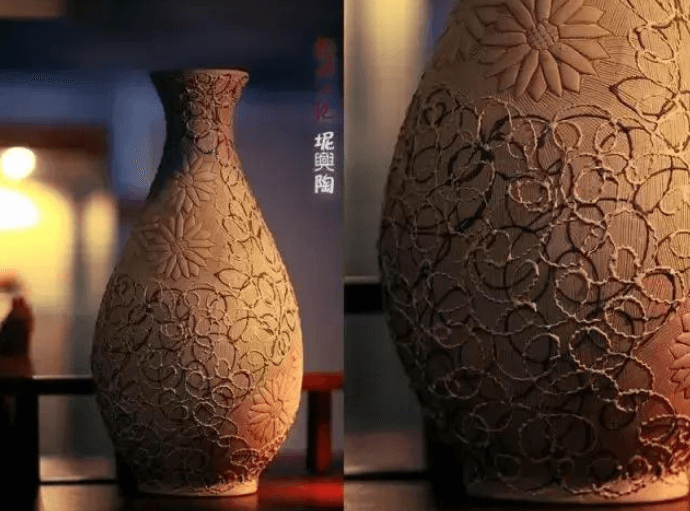China’s vast land has nurtured one of the world’s oldest and richest ceramic traditions. For thousands of years, pottery has been more than just daily utensils—it is art, culture, and philosophy shaped by fire and earth. Among countless regional traditions, four stand out for their unique artistry and deep cultural significance: Yixing Zisha Pottery (Jiangsu), Jianshui Zitao (Yunnan), Qinzhou Nixing Pottery (Guangxi), and Rongchang Anfu Pottery (Chongqing). Collectively known as the “Four Famous Pottery Traditions of China”, they are not only treasured works of craftsmanship but also inseparably linked with Chinese tea culture, bringing harmony between vessel and tea.
1. Yixing Zisha Pottery (宜兴紫砂) – Elegant Simplicity, A Universe in a Teapot
The history of Yixing ceramics dates back 4,000–5,000 years, but Yixing Zisha teapots gained fame much later. According to tradition, during the Spring and Autumn period (770–476 BCE), the statesman Fan Li retired with the beauty Xi Shi in Yixing and began pottery making, earning him the title “陶朱公” (Patron of Pottery). True Zisha teapots, however, emerged in the Ming Dynasty (early 1500s CE, during the Zhengde reign).
Masters like Gong Chun (1488–1566), Shi Dabin (1573–1648), and Chen Mansheng (1768–1822) elevated Zisha teapot artistry, leaving a legacy still admired today.
Yixing clay comes in three main varieties—purple, red, and green clays, known as “noble earth”. With their high plasticity, low shrinkage, and rich mineral composition, they allow artisans to craft teapots with sharp form and enduring beauty.
Zisha artistry blends sculptural form, calligraphy, engraving, and controlled firing. Its porous yet durable texture enhances tea brewing:
- Retains heat while allowing tea to “breathe”
- Preserves flavor without souring or turning stale
- Gains richer patina and aroma with long-term use
For tea pairing:
- Deep pots are ideal for black tea (Hongcha), unlocking its full-bodied flavor.
- Shallower pots suit green tea, preserving freshness and preventing over-steaming.
2. Jianshui Zitao (建水紫陶, Yunnan) – Calligraphy and Painting on Clay
Jianshui Zitao, named after its reddish-purple clay, originated in the Qing Dynasty (1821–1850, Daoguang era), evolving from the Ming-era coarse pottery tradition. It is often said: “Song had celadon, Yuan had blue-and-white, Ming had coarse pottery, Qing had Zitao.”
The clay comes from Wucai Mountain, finely processed into dense, smooth ceramic bodies.
Jianshui Zitao is renowned for its “engraving and inlay” method:
- Artists paint or inscribe calligraphy on unfired clay.
- Designs are carved and filled with contrasting clay colors.
- After firing, the vessel is polished repeatedly without glaze, resulting in a mirror-like, jade-like finish.
The teapots are dense and less porous, making them excellent for preserving heat and yielding smooth, mellow tea liquor. Unlike Yixing, they do not absorb tea aroma, meaning they are versatile for brewing any tea type—Oolong, Pu-erh, or black tea—while preserving the tea’s original fragrance.
3. Qinzhou Nixing Pottery (钦州坭兴陶, Guangxi) – Kiln Transformations, Beauty Born of Fire
Qinzhou Nixing Pottery uses unique red-purple clays from both banks of the Qin River. Clay from the east (softer) and west (harder) is blended after months of natural weathering, producing ideal pottery bodies.
Though pottery in Guangxi dates back 10,000 years, Nixing Pottery flourished during the Qing Dynasty (1850s, Xianfeng reign). It gained international fame after winning a gold medal at the 1915 Panama–Pacific International Exposition in San Francisco.
The most fascinating feature is its natural kiln transformation (yaobian):
- Fired without glaze or pigments
- Clay colors shift unpredictably to red, purple, bronze, or green
- Each piece becomes a one-of-a-kind “treasure of the kiln”
Rich in beneficial minerals like iron, zinc, and calcium, Nixing teapots are valued for both health and tea brewing. They maintain freshness, prevent souring, and enhance fermented teas such as Hei Cha and Liu Bao, which develop fuller aroma and depth in these pots.
4. Rongchang Anfu Pottery (荣昌安富陶, Chongqing) – Rustic Strength, Flame-Born Legends
Originating in Anfu Town, Rongchang (Chongqing), this pottery tradition dates back to the Han Dynasty (206 BCE – 220 CE). Blessed with high-quality red and white clays, Rongchang pottery developed its distinct character through centuries of refinement.
Traditional production involves 20+ steps—from clay preparation to shaping, kiln loading, and wood-firing. Kiln transformations create unpredictable natural variations in tone and texture.
Rongchang pottery is classified into:
- Plain wares (素烧泥精货) – unglazed, with earthy, elegant tones
- Glazed wares (釉子货) – translucent, resonant, often decorated with colorful glazes
With its hard, dense body and excellent heat retention, Rongchang teapots are suitable for green teas and floral teas. The smooth surface highlights fresh, fragrant aromas—perfect for jasmine tea or seasonal flower blends.
